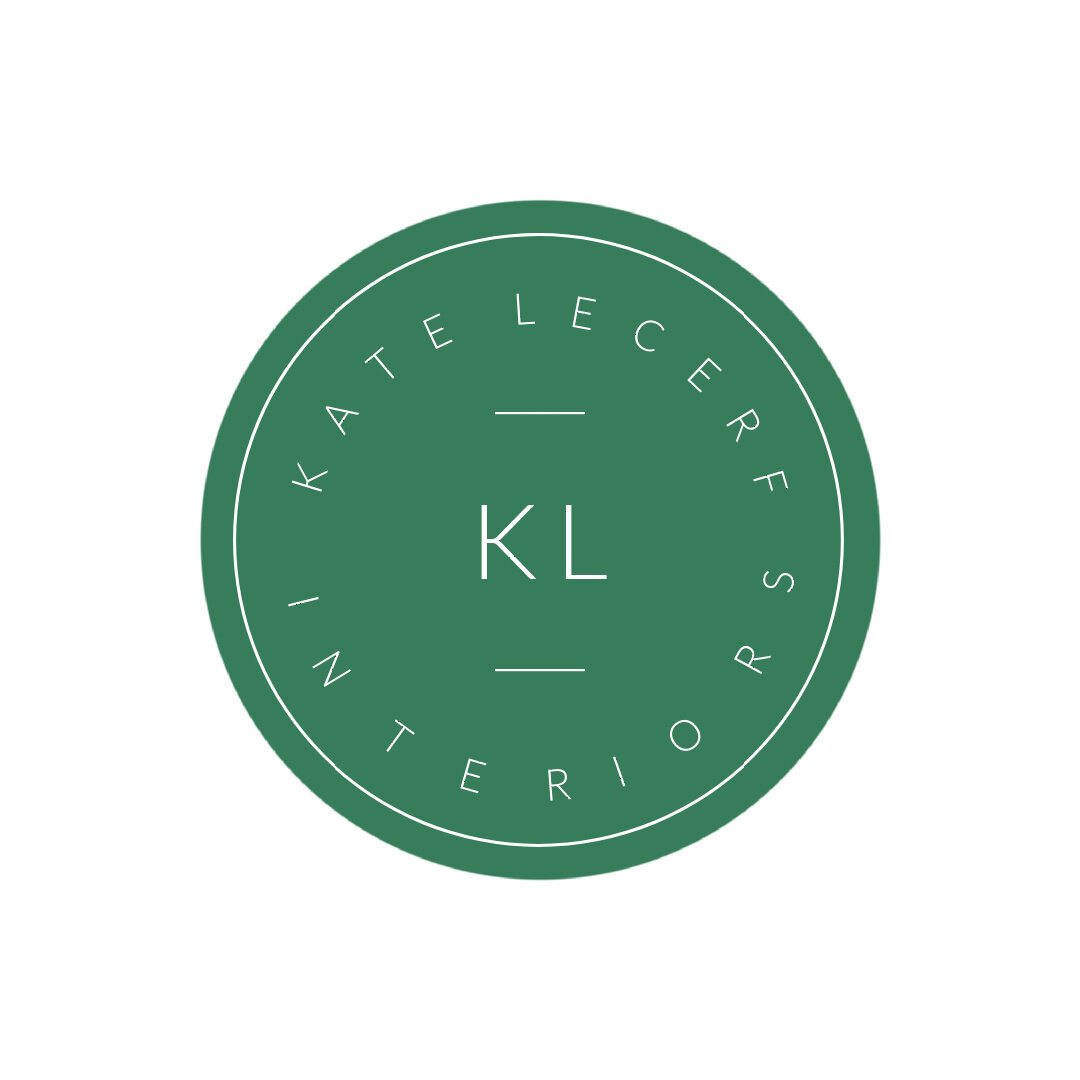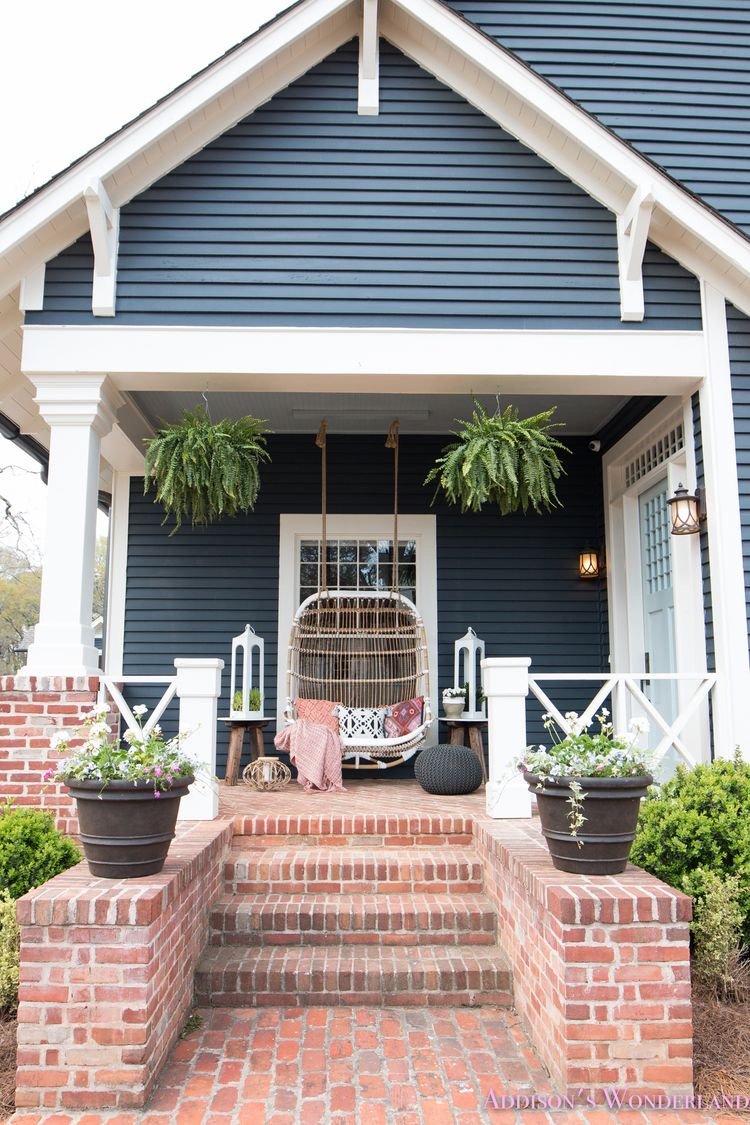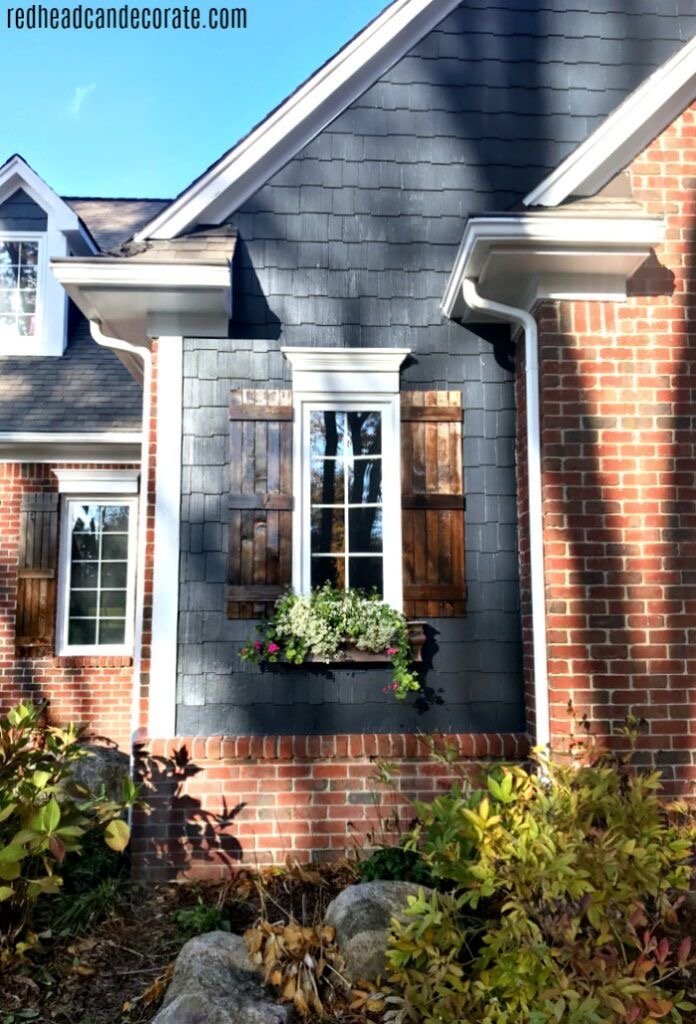Choosing the right Exterior Paint Color
Choosing exterior paint colors can be a daunting task. If you're considering giving your home's exterior a fresh coat of paint, you'll want to check out this blog post for some essential tips.
I reside in a typical suburban neighborhood. While it may not be the house of my dreams, I've enjoyed adding my own touch to it. Initially, the lack of curb appeal was a letdown; the house wasn't ugly, just devoid of any distinct character—utterly bland. Updating the exterior paint is a significant investment and usually not a DIY project. Plus, if you're part of a community with a Homeowners Association (HOA) and Architectural Review Committee (ARC), you might run into additional hurdles.
And now, for the 'before' reveal…
Indeed, it's quite unfortunate. I've seen worse than brown, so it was tolerable, and I got by for four years. But then, a series of unfortunate events unfolded: the garage door had to be replaced, leaving us with a glaringly white new one. Next, we endured severe hail damage, necessitating a roof replacement. To top it off, the house paint started to peel off here and there.
I really value the brick facade of my house; it's a traditional feature that's not common in my area. The neighborhood is large, and I often wander through the older part where the houses, about 20 years old, have a classic design with plenty of brickwork. On the other hand, the newer section of the neighborhood, where my house is located, consists of homes around 10 years old with a craftsman style and mostly stone facades. I'm grateful for my home's brick exterior; although stone is nice, I prefer the look and color diversity that brick offers.
Choosing the right exterior paint involves several key considerations:
- The direction your home faces, especially if it's east or west.
- The compatibility of your brick or stone with various paint colors.
- The style and color of your neighbors' homes.
- Whether you want your home to stand out or blend in.
- The architectural features of your home and how to highlight them.
Starting with lighting, an East-facing home will bask in strong morning sunlight but will be shaded during the afternoon and evening. Colors will naturally appear brighter in the morning and darker later in the day. While this may not significantly affect interior colors, it's an undeniable factor for exterior ones. For West-facing homes, like mine, the intense afternoon sun can cast yellow and orange hues. South-facing homes enjoy light throughout the day, whereas North-facing ones are mostly shaded.
LRV, or Light Reflective Value of paint, is crucial, especially when selecting coordinating colors. A higher LRV means a lighter color, and a lower one indicates a darker shade.
It's also worth noting that dark colors may fade quicker and absorb more heat, potentially raising cooling costs in the summer.
So, you're ready to paint and it's time to pick the perfect colors.
First up, see what your Homeowners' Association (HOA) says about paint colors. I sent in my color choices for their okay and picked from their pre-approved palette. At first, I wasn't thrilled because I like to mix my own colors and set my own style. I was aiming for a richer, darker blue, but it wasn't on the approved list, so I stuck to the HOA's rules.
Then, I hit the interwebs for some color inspo. I played around with creams, greens, and blues, keeping in mind the color of my brick. Here's a snapshot of my brick: luckily, it's not too red, gray, tan, or orange, but a nice blend of red, brown, and gray. I had a hunch that cream, green, or blue would be just right.
After getting numerous samples, I arranged them around my house to observe how the colors changed with the day's light.
Considering my neighbor's darker red house, I ruled out green. Cream, though timeless, felt too dull for my taste. In the end, I settled on blue. Below are the photos that inspired my choice.
In my search for a color to complement red brick, I considered various shades of blue, from lighter tones to those with green undertones.
My goal was to achieve a home with appealing curb presence, a touch of uniqueness, and a blend of soft, fresh, and traditional hues. The exterior should mirror the interior's style. With a predominantly traditional aesthetic, I aimed to incorporate southern, traditional elements into my home's design.
I replaced the original painted shutters with ones made of stained wood, which offered a higher quality look. While I contemplated additional changes, I ultimately refrained. Instead, I installed black iron shutter dogs and decorative hinges. For my porch, I commissioned railings in the Chippendale style, expertly crafted by my handywoman. The new lighting was another update; although gas lanterns were not an option, I found an alternative that I adore and fit my budget. Given that this is a standard house in a typical neighborhood, not a custom build, it's important to avoid over-investing in details that could exceed the area's value. The choices I made were both aesthetically pleasing and financially prudent.
And, tada!!! Here’s how it turned out. We love it. We get compliments all the time on it. The porch railing really adds a uniqueness because, while common in the South, Colorado homes don’t typically have this type of detail with Chippendale style.
Colors used…
Body: Sherwin Williams Slate Tile
Trim: SW Egret White
Front Door: SW Rain







